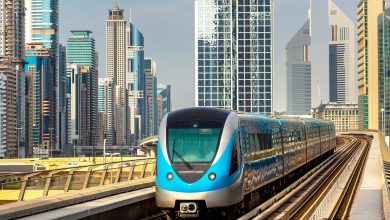The country’s first subway system will not only benefit commuters traveling across Metro Manila but also overseas Filipino workers (OFWs) and tourists going to and from the airport as the Department of Transportation (DOTr) announced the extension of the Mega Manila Subway Project up to the Ninoy Aquino International Airport (NAIA).
Department of Transportation (DOTr) Secretary Arthur Tugade said aside that from ease of mobility, the project will also improve passenger comfort and convenience.
“Economic managers thought we’re going to build a subway anyway, so why not push it to extend up to NAIA? It just makes perfect sense. The extension will mean greater connectivity and improved passenger comfort and convenience,” Philippine News Agency (PNA) quoted Tugade as saying.
The subway plan initially included 13 stations, starting from Mindanao Avenue and ending at FTI Taguig. With the extension to the country’s premier gateway approved, the cost of what is deemed as the Duterte administration’s most ambitious project spiked to $7 billion (P357.105 billion) from the initial $4.4 billion (P224.466 billion).
According to Undersecretary for Railways Cesar Chavez, the department is eyeing to have at least five stations of the Mega Manila subway operational by the end of the Duterte administration in 2022.
The subway system is expected to be completed and operational by 2025.
Source Philippine News Agency (PNA)
Related Articles:
Construction of P12.55B new Clark terminal to start in December


The government will start the construction of Clark International Airport’s new terminal building in December this year, according to PNA.
The report said the government is set to award the contract in November.
Bases Conversion and Development Authority (BCDA) President Vince Dizon said six bidders have already bought tender documents for the bidding of the new terminal building while about 20 local and foreign firms have expressed their interest to participate.
The Clark International Airport Expansion Project aims to construct a new passenger terminal to accommodate eight million passengers annually as well as the construction and installation of all required associated facilities –both airside and landside, to support the operations of the new terminal.
The Clark International Airport is seen as an alternative gateway to decongest the Ninoy Aquino International Airport in Manila.
“The cornerstone of the development of Clark is the international airport. We are expecting that eventually investors will set up business in Clark to decongest traffic in Metro Manila and promote growth in the countryside,” Dizon said during the Dutertenomics forum held on Thursday, August 10.
The expansion of the Clark terminal will be the first project to be undertaken by the Duterte administration under the hybrid public-private partnership (PPP) scheme.
The scheme is expected to result to lower airport charges for passengers as the infrastructure is funded by the government and will have a share in the earnings of the private sector from airport operations.
(Report via PNA)
Photo credit: build.gov.ph
Economists back Duterte’s ‘build, build, build’ program


The Filipino Times previously reported that the Duterte administration eyes a P8 trillion (Dh580 billion) infrastructure program, which could create 2 million jobs annually.
Budget Secretary Benjamin Diokno said the program could require the government to bring home overseas Filipino workers (OFWs).
A group economists from the University of Asia and the Pacific (UA&P) and the First Metro Investments Corporation (FMIC) urged the government to speed up infrastructure projects that could boost economic growth and create more jobs.
Victor Abola, an economist at the U&AP, said President Rodrigo Duterte’s “Build, build, build” program will be “the driver from the government side”.
“You have to see that infrastructure means lower costs for us for doing business, moving the goods, moving people, which are essential for an efficient economy,” Abola said.
FMIC Chairman Francisco Sebastian said the government’s infrastructure programs will also bolster tourism and agriculture sectors.
He added that the infrastructure program will also complement the contribution of OFW remittances and business process outsourcing (BPO), the Philippines’ top pillars, in the country’s growth.
“We should have engine of growth other than [OFW remittances and BPO]. We like we hear about infrastructure, it sounds very promising. We are pleased that ‘Dutertenomics’ is now part of the world economic lexicon. It means pushing economic growth through aggressive infrastructure spending,” Sebastian said.



